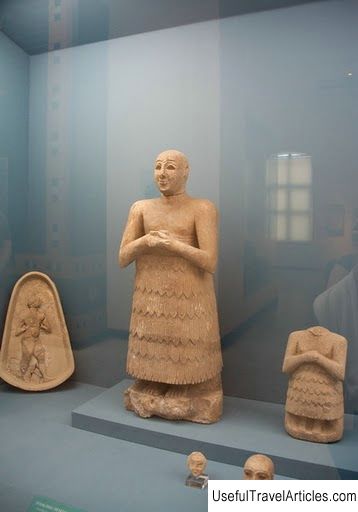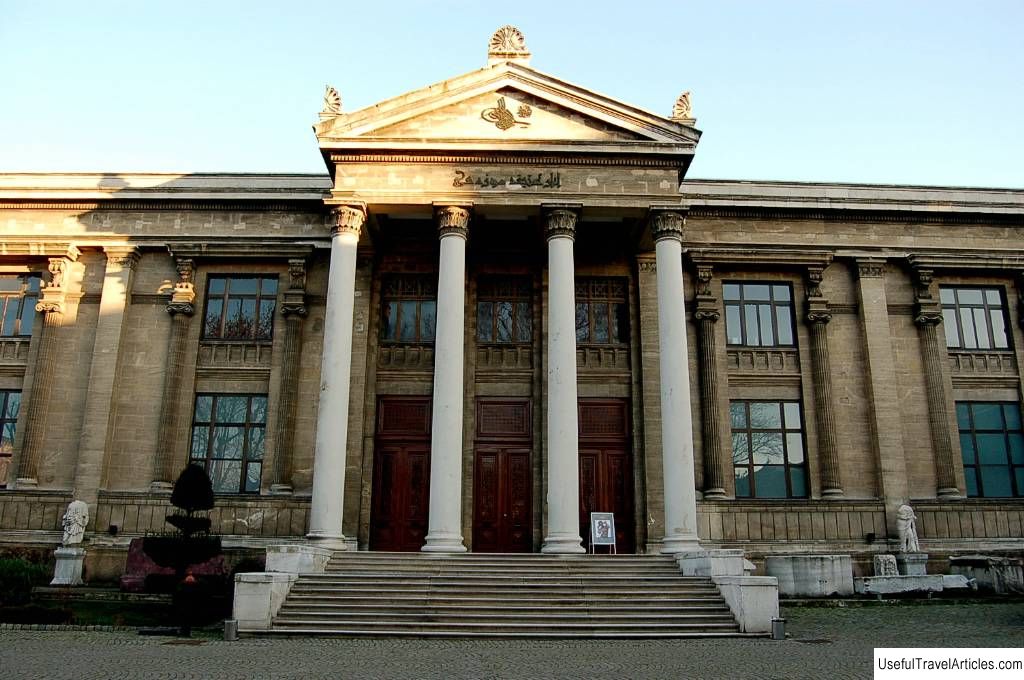Museum of the Ancient East description and photo - Turkey: Istanbul
Rating: 8,2/10 (298 votes) 
Museum of the Ancient East description and photos - Turkey: Istanbul. Detailed information about the attraction. Description, photos and a map showing the nearest significant objects. Photo and descriptionThe Museum of the Ancient East is part of the Archaeological Museum, which, after repairs and alterations (1917-1919 and 1932-1935), became part of it in 1935 ... The building was built to house the School of Fine Arts at the Imperial Museum, organized (1883) by Osman Hamdi Bey. The Museum of the Ancient East has a particularly rich collection of artifacts and archaeological finds from all regions of the Middle East that were formerly part of the Ottoman Empire and once belonging to early civilizations - Mesopotamia, Anatolia, Egypt and the entire Arab continent. Pre-Islamic idols and deities, ancient Aramaic inscriptions and a small collection of Egyptian antiquities that were brought here from the courtyard of the Al-Ula temple were exhibited here. The last renovations took place here in 1963-1974, and after that the renovated museum with a new layout re-opened its doors to visitors. Here you can admire the objects that represent the material and spiritual culture of such powerful and ancient states as Babylon, Egypt and Assyria. The exposition of one of the halls fully reflects the culture and life of the state of Urartu, located in the northeast of Anatolia. This is another mysterious power that disappeared in the XIII century. BC. It was inhabited by the Hittites. The most interesting exhibits in the museum are the statues of the kings of Gudea from Lagash, Hamurappi from Babylon, Salmansar III, and, of course, the faience relief that adorned the Sacred path leading to the Ishtar gate in Babylon. It dates from the 7th to 6th century BC The museum housed an exhibition entitled "Istanbul Through the Ages" - a rich and well-preserved exhibition was awarded the Council of Europe prize in 1993. The exhibition also featured a bell from the 14th century. from the Tower of Galata, and part of the serpentine Column of the Hippodrome - the restored head of the serpent. On the two lower levels of the exposition there were exhibits dedicated to the centuries-old evolution of Anatolia and Troy. There were also sculptures from Palestine, Cyprus and Syria. The Museum of the Ancient East is located to the left of the gate at the entrance to the complex. Everything in it is dedicated to the most ancient cultures. Anyone who is just starting to get acquainted with the ancient culture of the Arab East will be very interested to know how much the artifacts of these civilizations differ from those of other cultures - Hellenic and Ancient Roman. The most precious heritage of the Byzantine era is the remains of the Ishtar gate, also in the Museum of the Ancient East. The mosaic bas-reliefs of these gates cannot but amaze with their realism. They depict lions, bulls and sirrushes - dragons with snake heads. They were built under the king of Babylon Nebuchadnezzar. Such a rich collection of Ishtar bas-reliefs is nowhere else in the world. In the museum you can still contemplate the Obelisk of Adad-Nirari III, which has wedge-shaped inscriptions. The oldest exhibits in the museum date back to the 13th century BC. These include the sphinx from the Yarkapi gate in Hattusas and, truly the gem of the collection, 2 of the 3 famous clay tablets of the ancient peace treaty (Treaty of Kadesh), which was signed between the Egyptian pharaoh Ramses II and the Hittite king Hattusili III in the 13th century BC. They say that Osman Hamdi Bey donated his annual earnings for the construction of the museum. After that, in 1884, a ban was imposed on the export of archaeological monuments abroad by a new provision included in the law on relics.       We also recommend reading Arzl im Pitztal description and photos - Austria: Pitztal Topic: Museum of the Ancient East description and photo - Turkey: Istanbul. |




